Lesson 5 – Needles
Ok and let's talk about all needles
Needles can be different. First of all, there are needles for pen machines like Giant Sun, Goochie and so on. This needles are short and look like this:

And can be long, soldered on the bar for tattoo machines
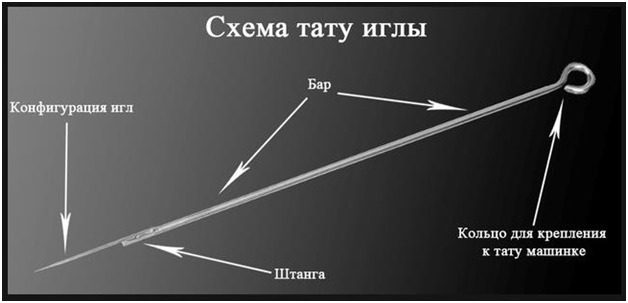
And they can be modular ones (needle and tip as one)
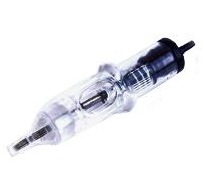
- RL - a round liner with 3,4,5,7,8,9,14,18 pins which are soldered in a round bunch, needles are located densely to each other, they can be used for drawing lines
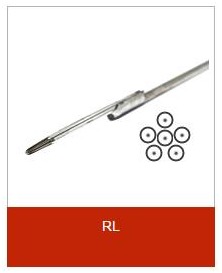
• RS - a round shader with 3,4,5,7,8,9,14,18 where pins are soldered in a round bunch, needles are soldered freely, they could be used for shading of some fragments
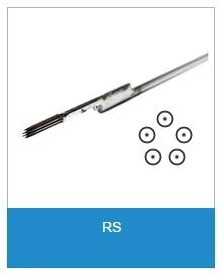
• Single - 1 needle, is suitable for all types of works.
Single needles are always RL, always liners
- M2 – Magnum "Stacked Mag" – needles for a dense filling, pins are soldered densely as the liner, 5,7,9,11,13 needles are soldered in flat bunches in two ranks by the principle 3+2, 4+3, 5+4, 6+5, 7+6. We can apply them for drawing shadows, solid fillings, and gradients
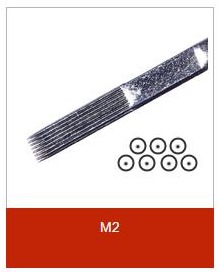
- M1 – Magnum "Weaved Mag" – needles for filling “from transparent to dense”, pins are soldered loosely as a shader, 5,7,9,11,13 needles are soldered in flat bunches in two ranks by the principle 3+2, 4+3, 5+4, 6+5, 7+6. We should apply them for drawing of shadows, solid fillings, and gradients
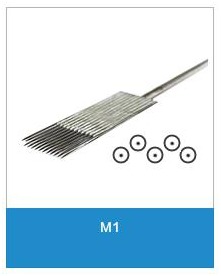
Magnums can have a curved shape
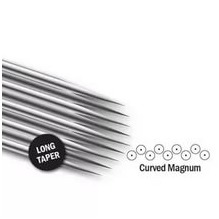
Such magnums are better than usual ones. Why? because usual magnums demand the right position of the hand.
- Flat – a flat needle, 4,5,6 pins are soldered as a flat bunch in one row, they could be used for drawing soft shadows and gradients
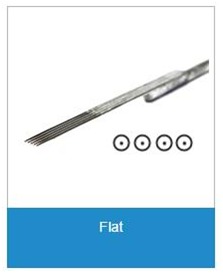
If the shape of needle slopped 45 degrees these needles are called slopped needles.
You can see the difference between flat and sloped needles on next picture:
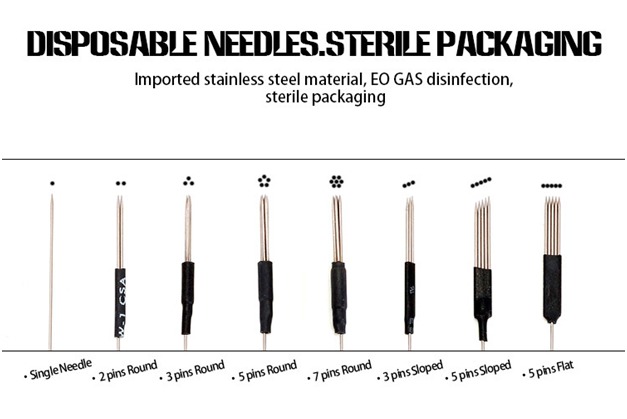
Super magnum - 20-45 pins are soldered in special very wide bunches, they can be used for filling big areas in tattoos, but they are applied very seldom.
- The textured needles – needles with a rough surface on a needle tip
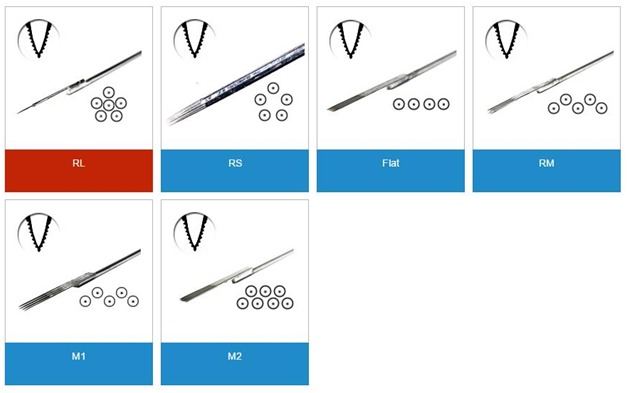
The sharpening of needles can be round and cut, long and short, narrow and bullet.
For the reduction of injury, we can use acupuncture needles (they are flexible and have bullet sharpening), they should be applied for pen machines.
They have different lengths and diameters. 0.3 mm is optimum diameter for work with lips and eyes, the is less diameter, the less pixel they provide, the better gradient you can get but the longer your work will take.
The acupuncture needle has a special handle which should be cut off by flat-nose pliers.
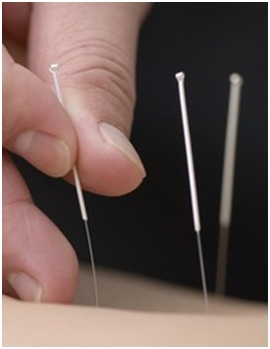
Some needles can be sharpened very sharp and be very precision. These needles are classified as separated class precise needles or bug pin needles.
Actually the words "bug pin" means the type of sharpening and these words are synonyms of words "the best quality". In old times the collectors of insects pinned-up butterflies and bugs to the wall and as they had to pierce the insect not damaging its body they had to use the hardest needles and had to sharp them quite well. Now this name is used for tattoo needles, though nobody will pin up the dragonfly to the wall with the tattoo needle, especially if it is 9magnum :))) Actually all precision needles can be named as bug pin needles.
If to talk about tattoo precision needles you can find out that you really like their quality and sense of easier work with them.
However I don’t advise to buy 1rl needle for brows (you can buy them for eye shadows), but if you make brows with this needle you will work endlessly because the pixel is too little. But if you want to buy many pins needles then it is really better to buy precision or any different "bug pin" needles.
You can look site of precision needles here:
So you see, that the precision needles can be not only 1rl, they have usual sizes and you can use the tips for usual tattoo needles, for example, 1rl+ tips 3rt, 3rl+ tips 3rt, 3rs + tips 3rt and so on
You can download the descriptions of these needles here: http://www.precision.supplies/downloads/Precision_Needles_Technical_Manual.pdf
We already considered manual needles including Softap. Look link to the message above, please. As for Softap needles, I can add that they can be used absolutely everywhere for all areas of the face. All types of flat needles with 1 row can be used for eyeliner contours, lips contours, tails of brows: 5,6,7,9,10,12,14,16. 2 rows flat needles can be used for the same goal but they will provide softer contour: 24,28 pin needles Round needles can be used for filling some areas. I mean 3,8,15,18,36 pin needles. 3,8,15,18 pin needles could be used for eyes, brows, lips, 36 is too big for eyes. 39,42,56,84,114 pin needles can be used for lips and brows. Actually we work just with 8pin needle in the studio. Flat elements are usually being done with machine methods. I consider that you can have a 1row flat needle-like 7 2rows flat needle-like 24 1 round needle-like 8 And just in case something big like 56, 84, or 114 But you should take in account that the more pins your needle has there more superficial result you will receive. Once I saw the result after the master class. The contour of eyeliner was done with 7 flat needles and it healed perfectly. The inner side of eyeliner was done with an 18 round needle and nothing stayed after healing. It happened because the pressure which press on 1 needle is more in little needles (7-8) and less in big needles (18-114).
To tell the truth we use Softap in our studio just for eyes (always) and for brows (in complex cases). We don’t like Softap for lips because it is too traumatic for lips and heals with thick scabs and pale results. Giant Sun is more effective for lips.
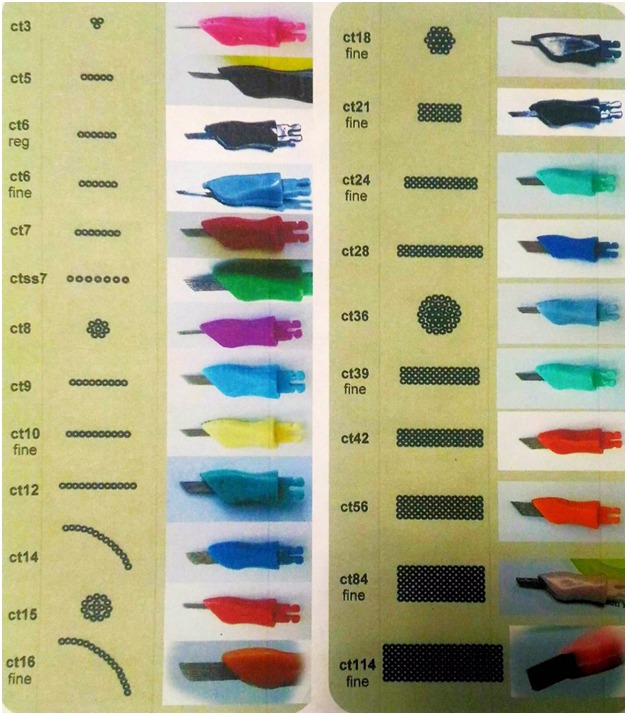
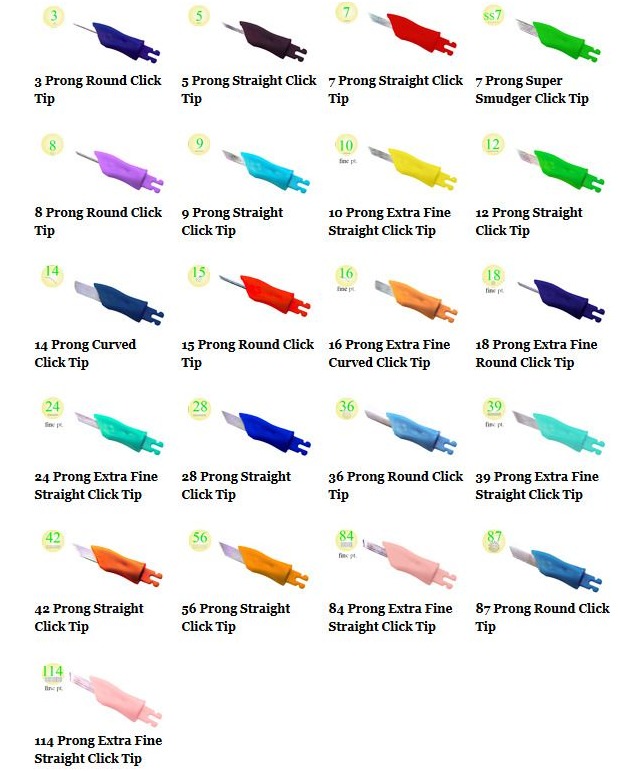
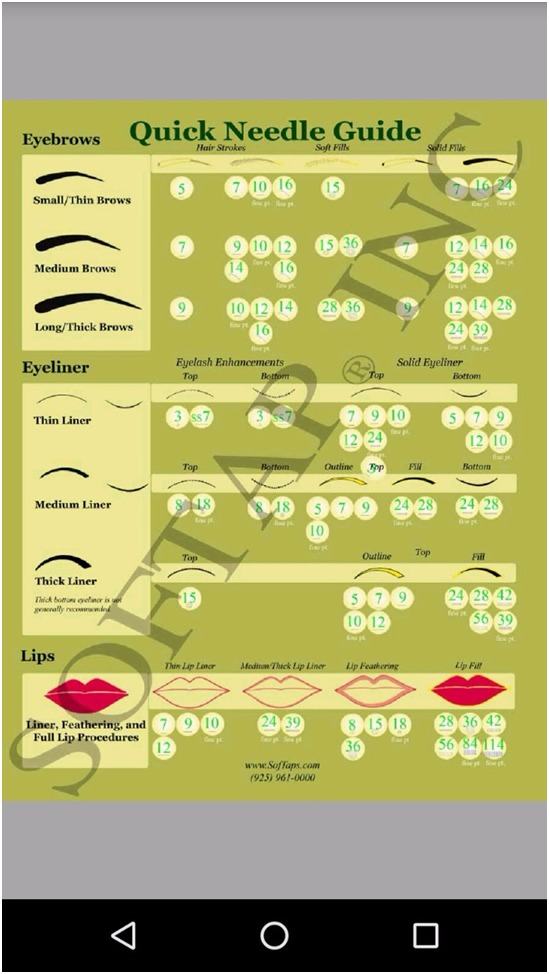
As I told before we use substitutes of Softap needles like this round Chinese manual needles:
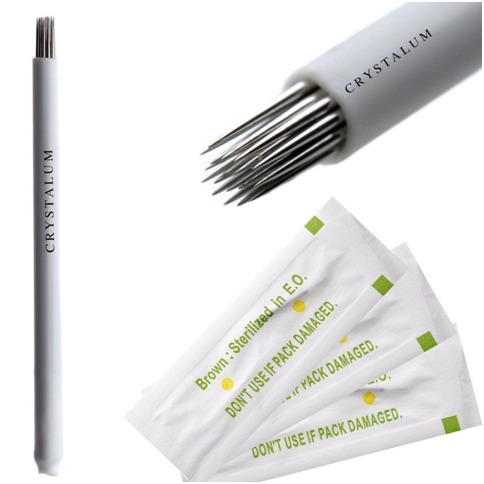
One of our colleagues kindly shared in FB group this picture with traces from different kinds of needles if to apply them with the tapping method. Maybe it will be helpful for you as well.
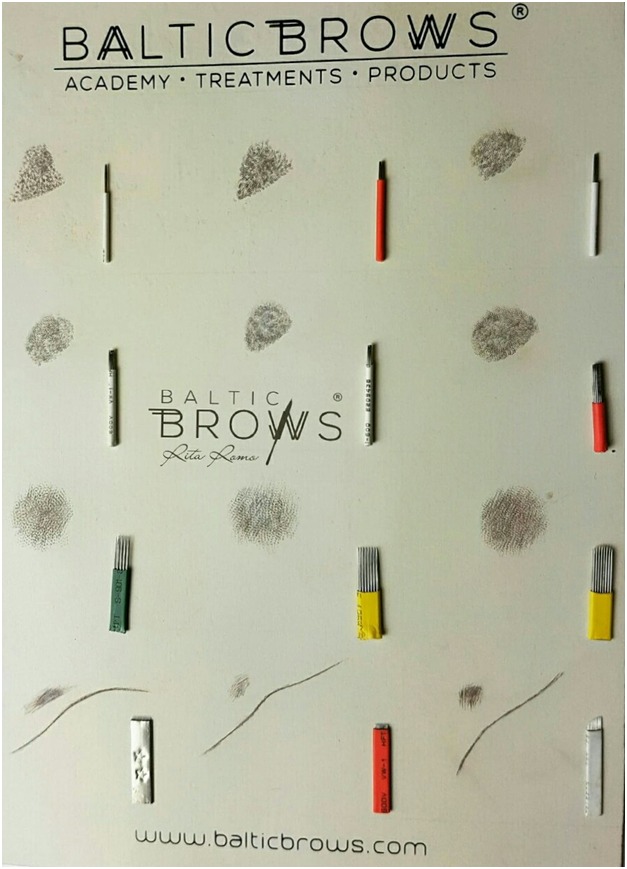
As you saw on our video we can also use MB blades like this with the tapping method:
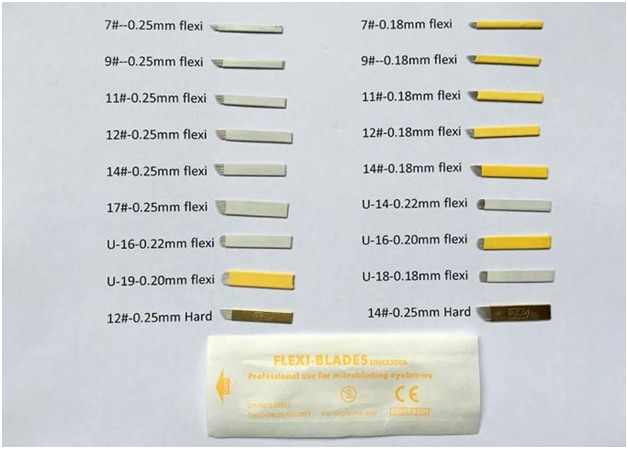
I can say that they are so so for taking method. I think that softap needles are still the best for this goal but the price for MB stuff and Softap equipment is very different, Softap is much more expensive. This is why everybody still considers such substitutes as these blades. And we are not exclusion... 🙁 we look for different needles which can be used instead of Softap. But we like round needles much more because they have more optimal distance between pins which allows you to leave enough pigment for healing. As for blades, the pins are collected too tight there (mostly good for blading), they can't normally puncture the skin with tapping movements (pins press skin not always puncturing it). This is why tapping with blades gives you weak retention after healing.
You can be also interested in some information about these needles:
These needles leave very soft powder. So in order to do a quite visible result, you should make many passes.
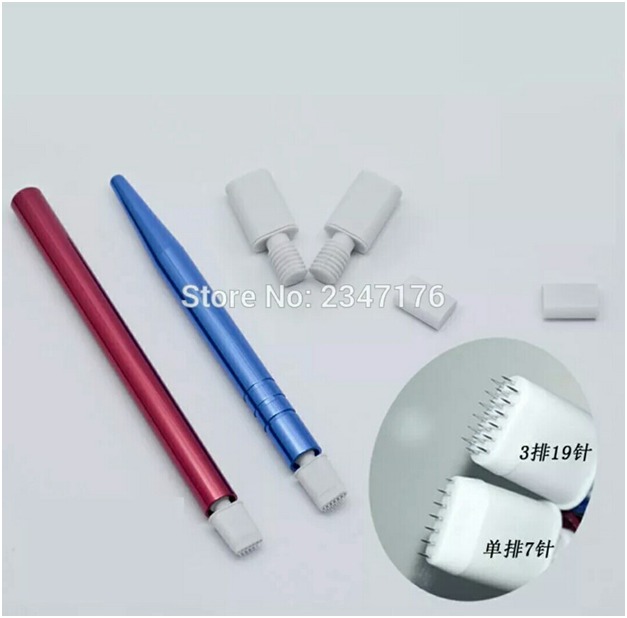
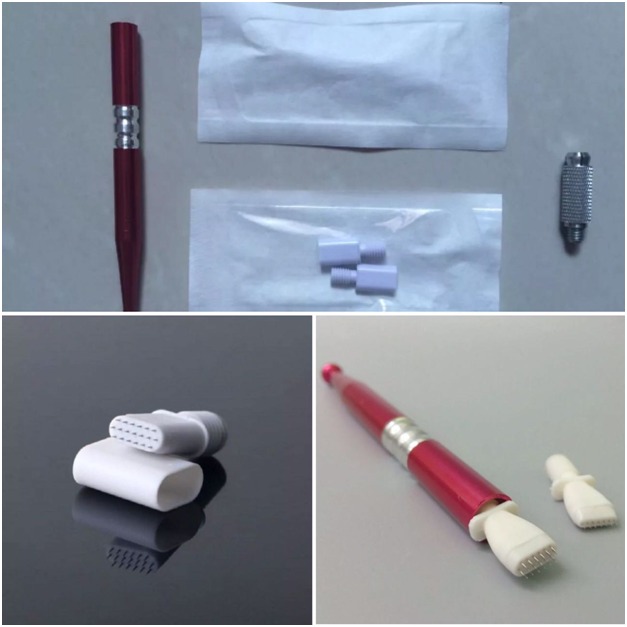
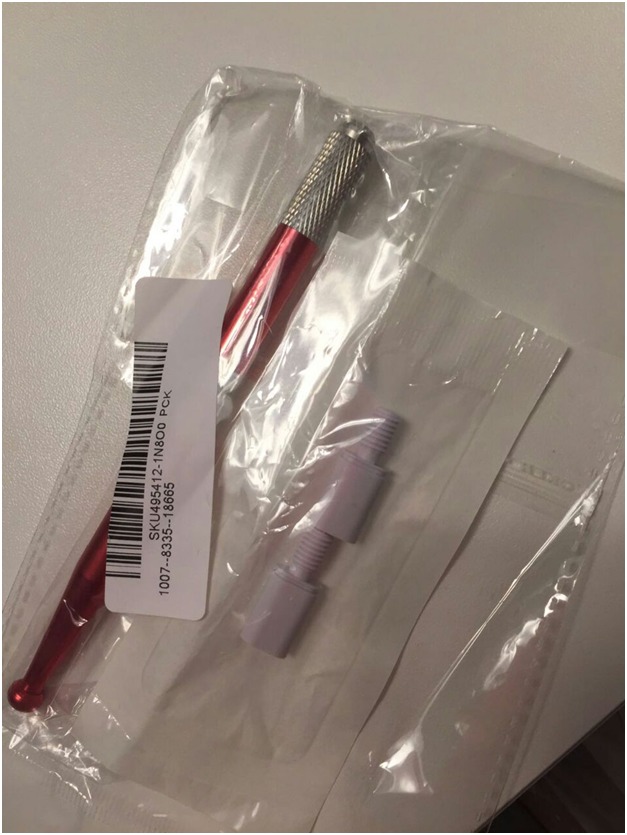
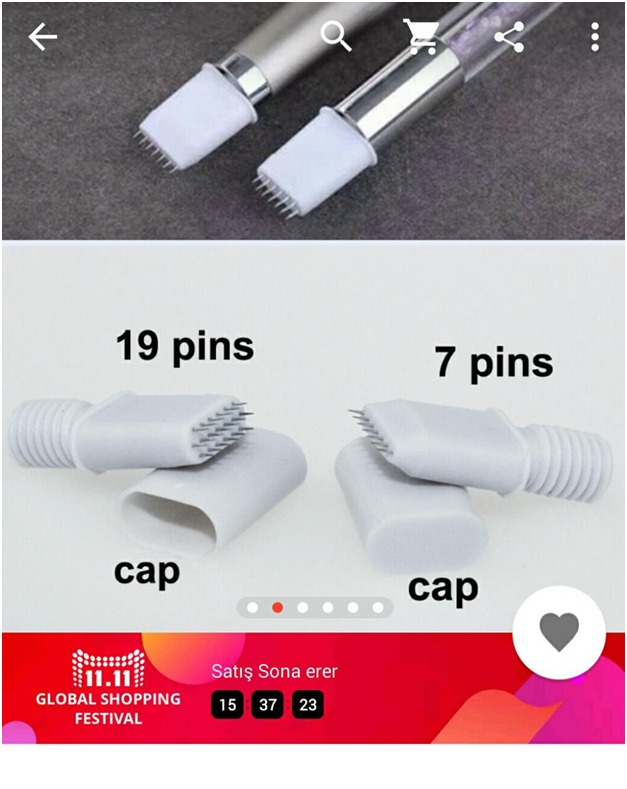
We do not use these needles for lips and eyes because of too transparent result
If to speak about many-pins-needles we should talk about the right position of your hand and machine.
The correct position of usual needles is about 90 degrees to the surface of the skin. If you hold the machine with this right angle you get precise, not blurry pixels.
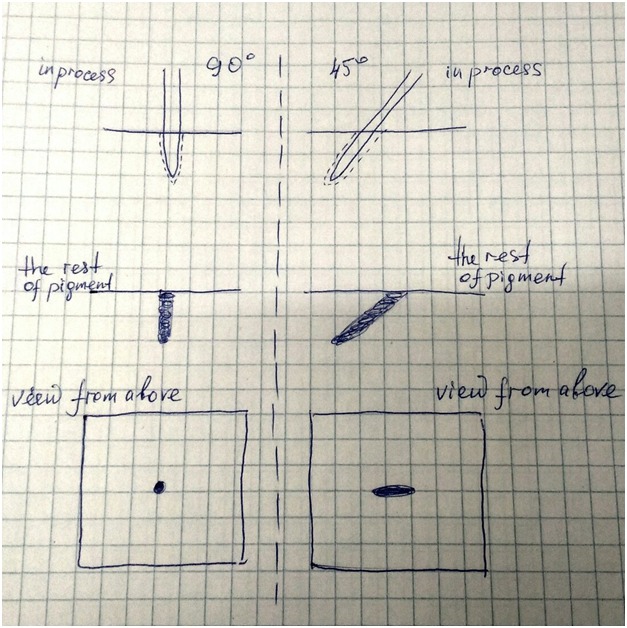
In addition, your needles are not sloped and if you use 7r with an angle about 45degrees you will put 1 corner of needle deeper than the other one and can make spots. You can notice it with magnum and flat needles also. So if you have slopped needle hold your hand 45dgrees if nor slopped 90degrees position will be correct.
So as you see for all many pins needles you should keep exact angle 90 for usual needles and 45 for slopped needles. It is related not only to magnums and flat needles but also for many pins round needles.
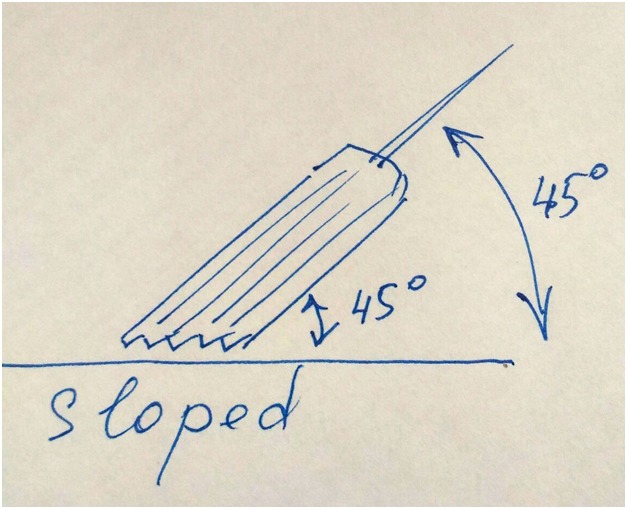
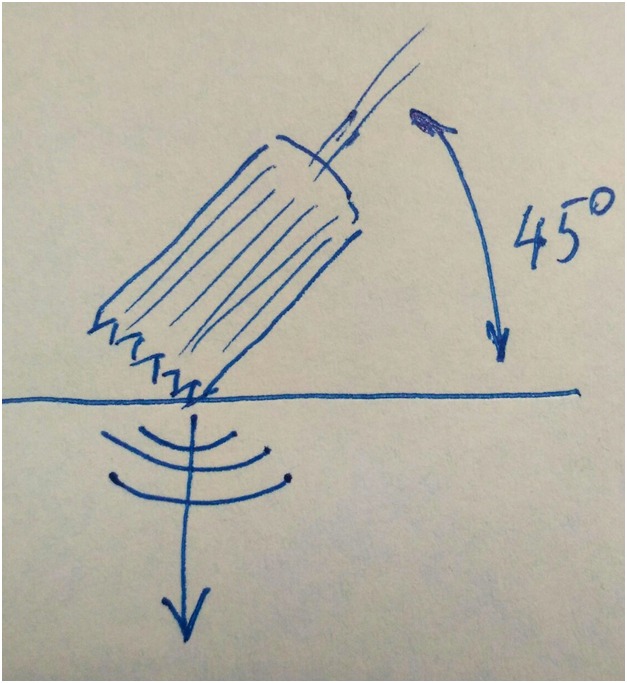
Now you understand why curved needles are good. They do not cling skin due to rounded shape.
The main factors for choosing a needle are the depth and density you would like to work with. The more pins needle you take the more superficially you work (because the pressure is shared between several needles). 1rl allows working deeper than any other needle because all pressure applies to 1 pin and it goes deep. As for density 1rl allows you to achieve the most transparent effect because only you decide how much air you put between strokes. As for many pins needles, the exact configuration of the needle allows you to achieve some level of PMU density because of the exact distance between pins. This is why almost all many-pins-needles give us rather a dense effect than the fluffy one. This is why we mane transparent things in lips or eyes PMU mostly with 1rl, but dense areas with 3-5-7rl configurations. Shaders leave more air between pixels but they are still very close to each other, so shaders are intermediate variants for half-dense work. I tell you all of this you to understand the main thing: We have a wide choice of methods and equipment. You should know only the physics of its work and then you can choose the right composition of needle-machine-pigment for any exact case without someone’s opinion about this exact case.
And as for good shader needles, it depends on the situation. What is good for one area is not good for another area, which is good for one skin is not good for another one. If we talk about transparent shading on eyelids I recommend to buy 1rl and 3rl precision needles. I mean exactly brand Precision.
But at the same time, you should be sure that your pigment is enough retentive to be laid into the skin with a 1rl needle!
Ok, that's all for today read and watch carefully 😘😘😘😘🤗
